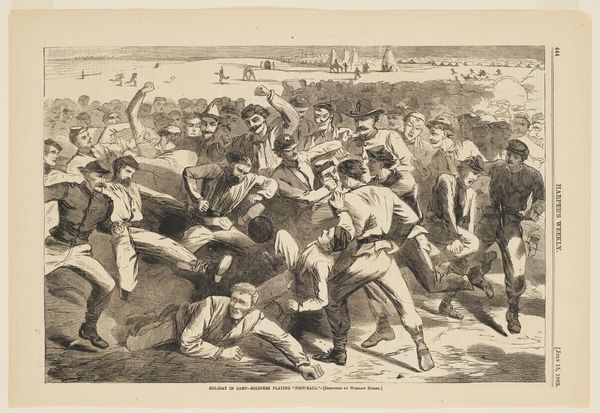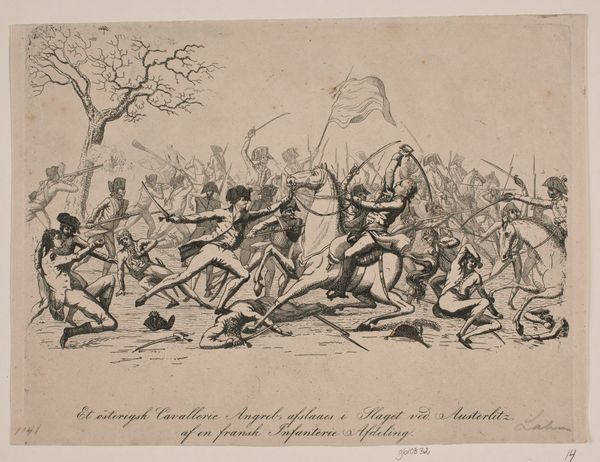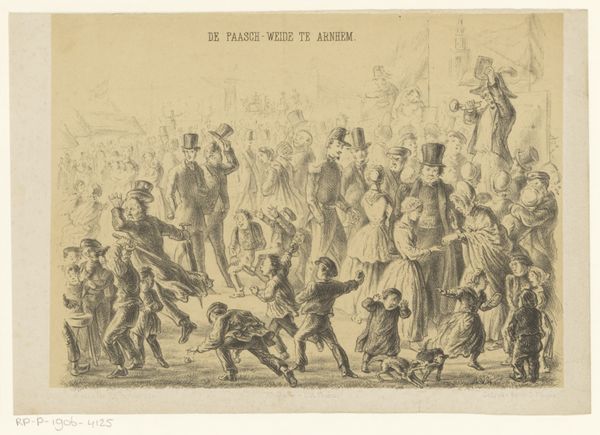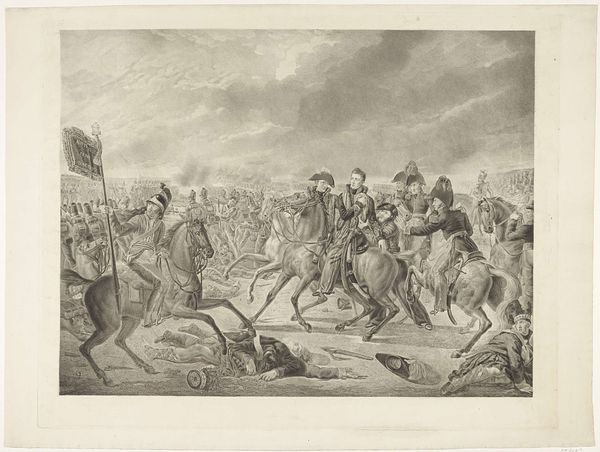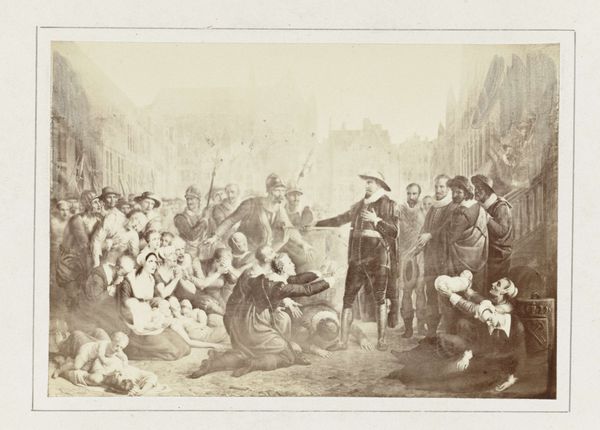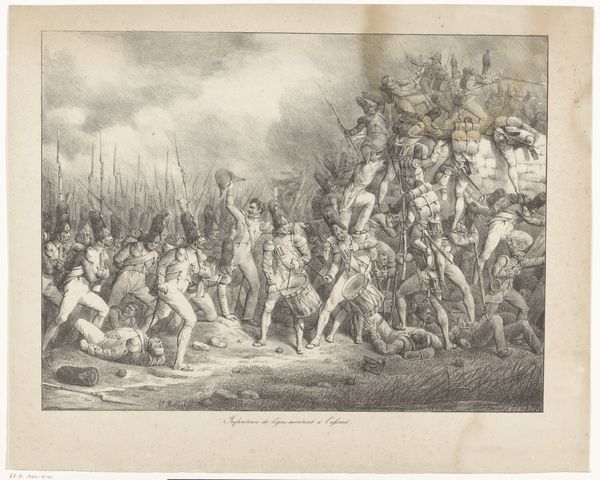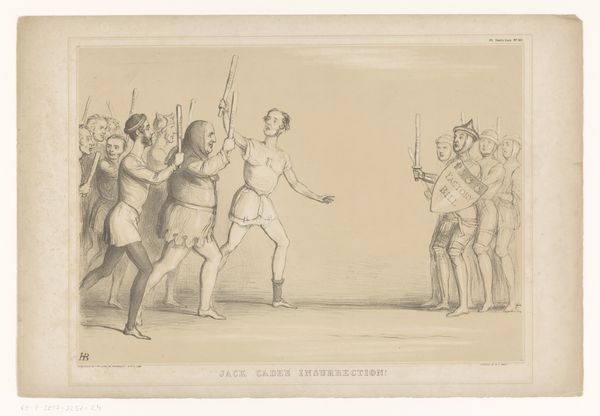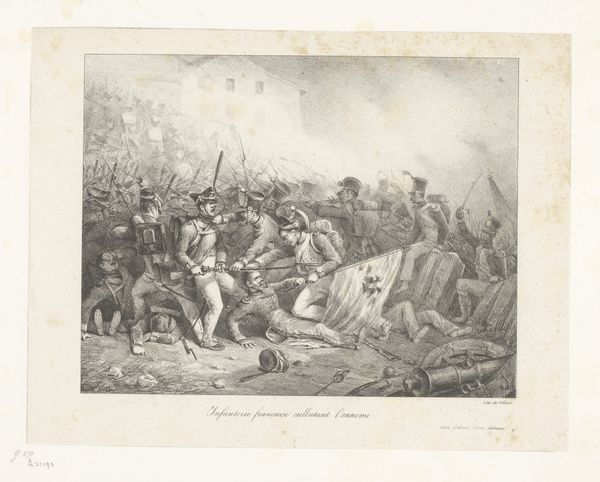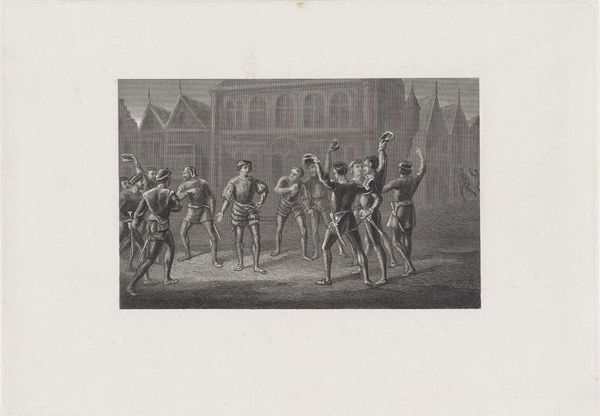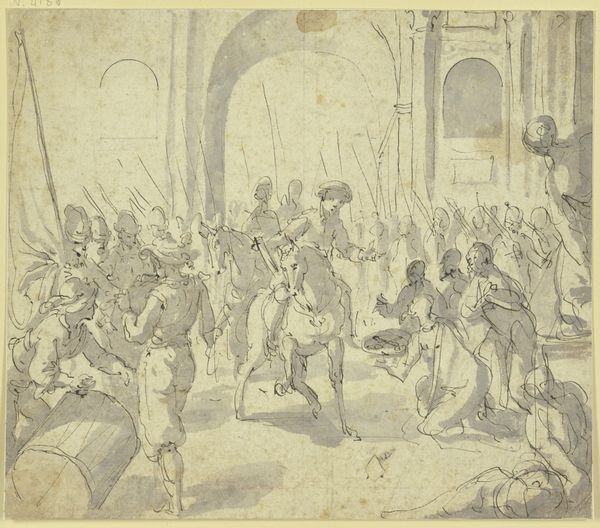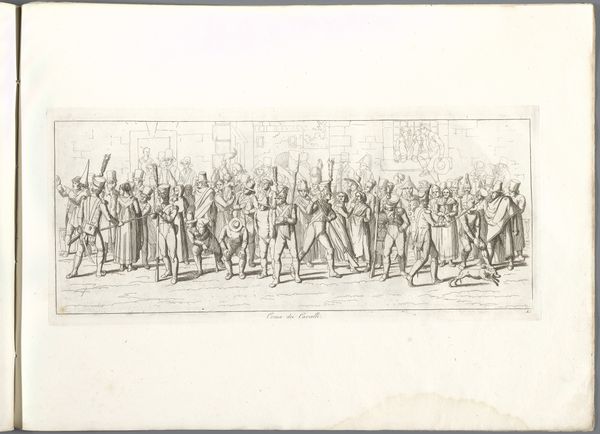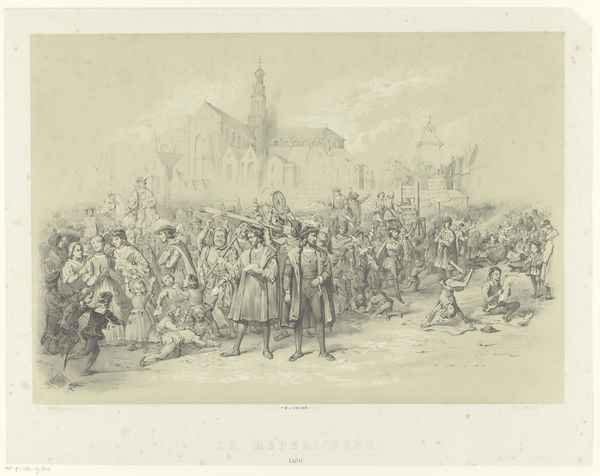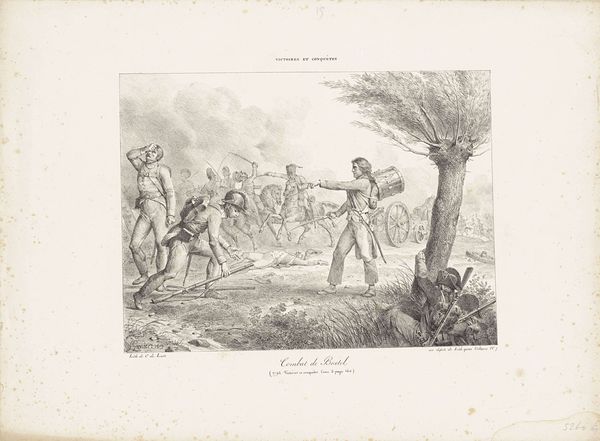
Feestvierende studenten begroeten hun idool Franz Liszt 1865 - 1866
0:00
0:00
Dimensions: height 344 mm, width 508 mm
Copyright: Rijks Museum: Open Domain
Curator: Alexander Ver Huell created this energetic drawing, "Feestvierende studenten begroeten hun idool Franz Liszt," around 1865-1866. It’s currently held in the Rijksmuseum collection. Editor: What a lively scene! The initial impression is a rush of celebratory chaos, bodies moving every which way. It's incredibly dynamic for a drawing. Curator: It captures that Romantic-era enthusiasm, certainly. Looking at the production of this work, one can see the influence of academic training, specifically the skilled handling of pen, ink, and pencil on paper to render such a complex crowd scene. How does the materiality of the drawing speak to you? Editor: The limited tonal range really pushes the viewer to appreciate the pure lines and forms. Notice how Ver Huell guides our eye with clusters of darker marks balanced against areas of blank space. It’s the orchestration of visual elements, you see. Curator: Indeed, that controlled application must've taken immense skill and preparation. We also must consider this drawing was probably not conceived in a vacuum. It was a material object created within specific social and political dynamics of its time. Editor: Though, consider how Ver Huell is working with established compositional strategies of Romantic painting to evoke dynamism and spectacle. The surging crowd creates a visual rhythm that, while appearing spontaneous, is tightly controlled through repeated shapes. Curator: Controlled but suggestive, I believe. This celebration serves both the interests of hero worship and academic exercise for the artist in portraying emotional frenzy. The student Liszt's work may have created ripple effects on labor within social circles involved with performance in some way. Editor: Maybe so, but the drawing makes a statement visually before anything else. And that statement is communicated primarily by this controlled freedom of line, defining every detail, capturing the essence of movement. Curator: Well, considering the original audience for such drawings can reveal important factors, I agree it serves the work well. Editor: Exactly. Ultimately it presents a dynamic arrangement reflecting aesthetic harmony through structure, inviting further contemplation.
Comments
No comments
Be the first to comment and join the conversation on the ultimate creative platform.

